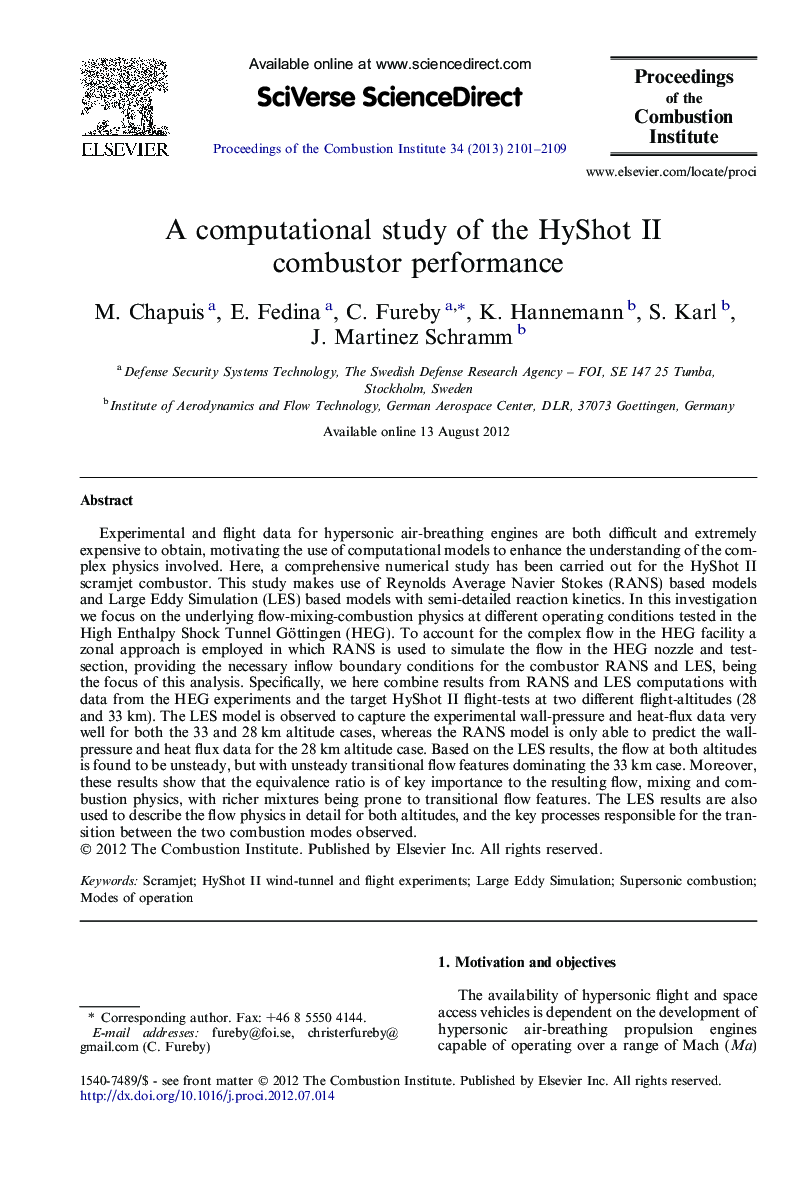| کد مقاله | کد نشریه | سال انتشار | مقاله انگلیسی | نسخه تمام متن |
|---|---|---|---|---|
| 240833 | 1427922 | 2013 | 9 صفحه PDF | دانلود رایگان |

Experimental and flight data for hypersonic air-breathing engines are both difficult and extremely expensive to obtain, motivating the use of computational models to enhance the understanding of the complex physics involved. Here, a comprehensive numerical study has been carried out for the HyShot II scramjet combustor. This study makes use of Reynolds Average Navier Stokes (RANS) based models and Large Eddy Simulation (LES) based models with semi-detailed reaction kinetics. In this investigation we focus on the underlying flow-mixing-combustion physics at different operating conditions tested in the High Enthalpy Shock Tunnel Göttingen (HEG). To account for the complex flow in the HEG facility a zonal approach is employed in which RANS is used to simulate the flow in the HEG nozzle and test-section, providing the necessary inflow boundary conditions for the combustor RANS and LES, being the focus of this analysis. Specifically, we here combine results from RANS and LES computations with data from the HEG experiments and the target HyShot II flight-tests at two different flight-altitudes (28 and 33 km). The LES model is observed to capture the experimental wall-pressure and heat-flux data very well for both the 33 and 28 km altitude cases, whereas the RANS model is only able to predict the wall-pressure and heat flux data for the 28 km altitude case. Based on the LES results, the flow at both altitudes is found to be unsteady, but with unsteady transitional flow features dominating the 33 km case. Moreover, these results show that the equivalence ratio is of key importance to the resulting flow, mixing and combustion physics, with richer mixtures being prone to transitional flow features. The LES results are also used to describe the flow physics in detail for both altitudes, and the key processes responsible for the transition between the two combustion modes observed.
Journal: Proceedings of the Combustion Institute - Volume 34, Issue 2, 2013, Pages 2101–2109